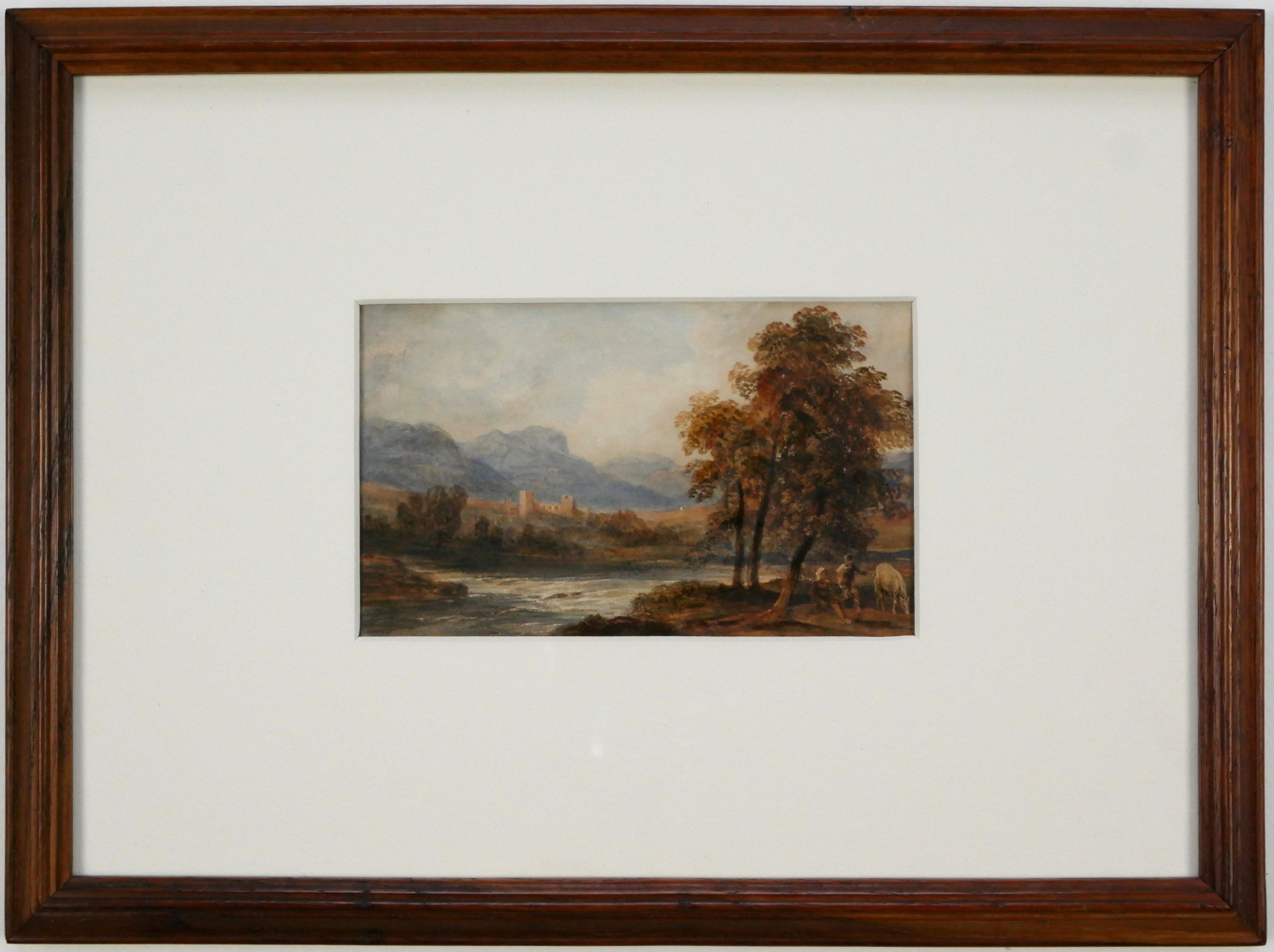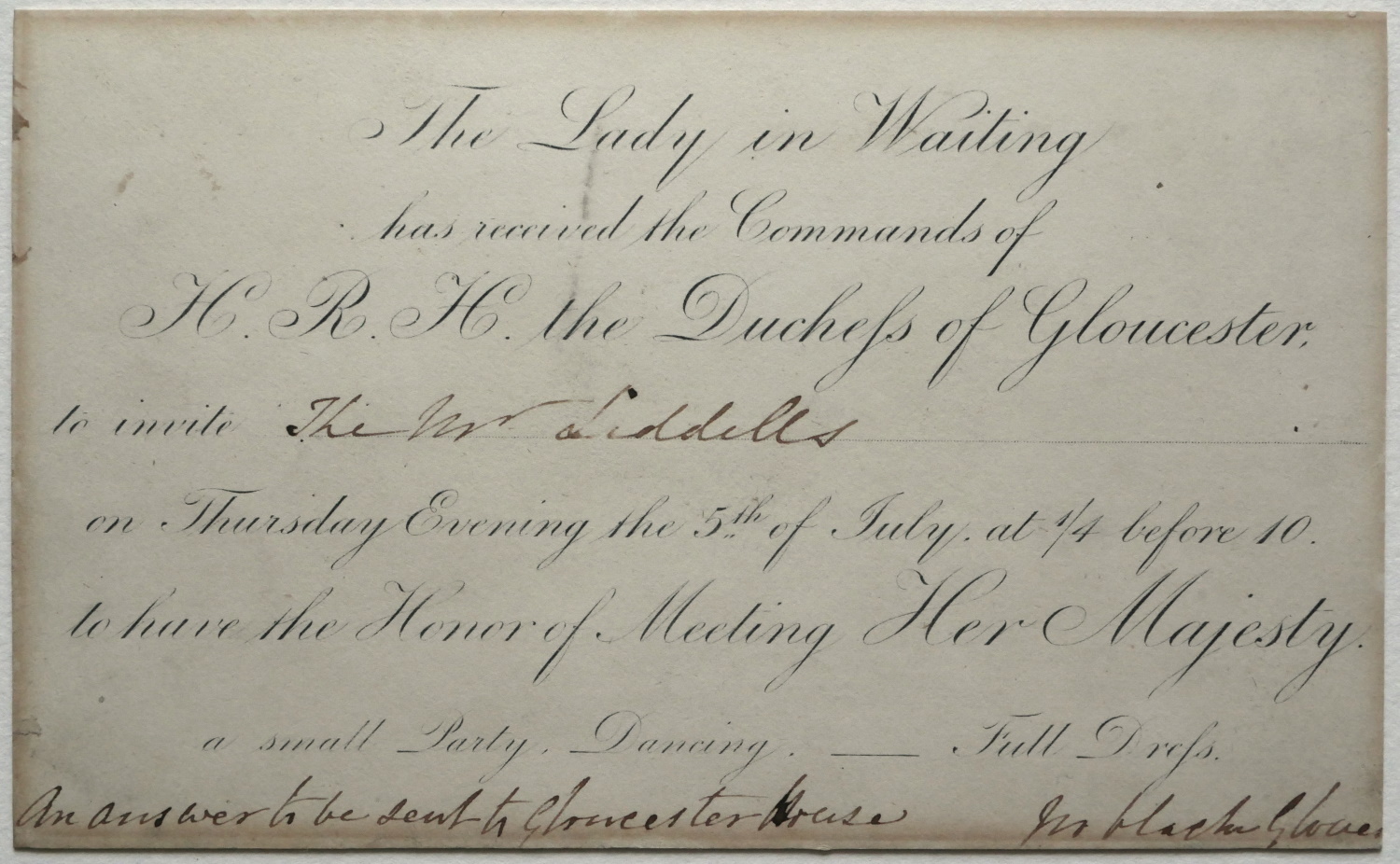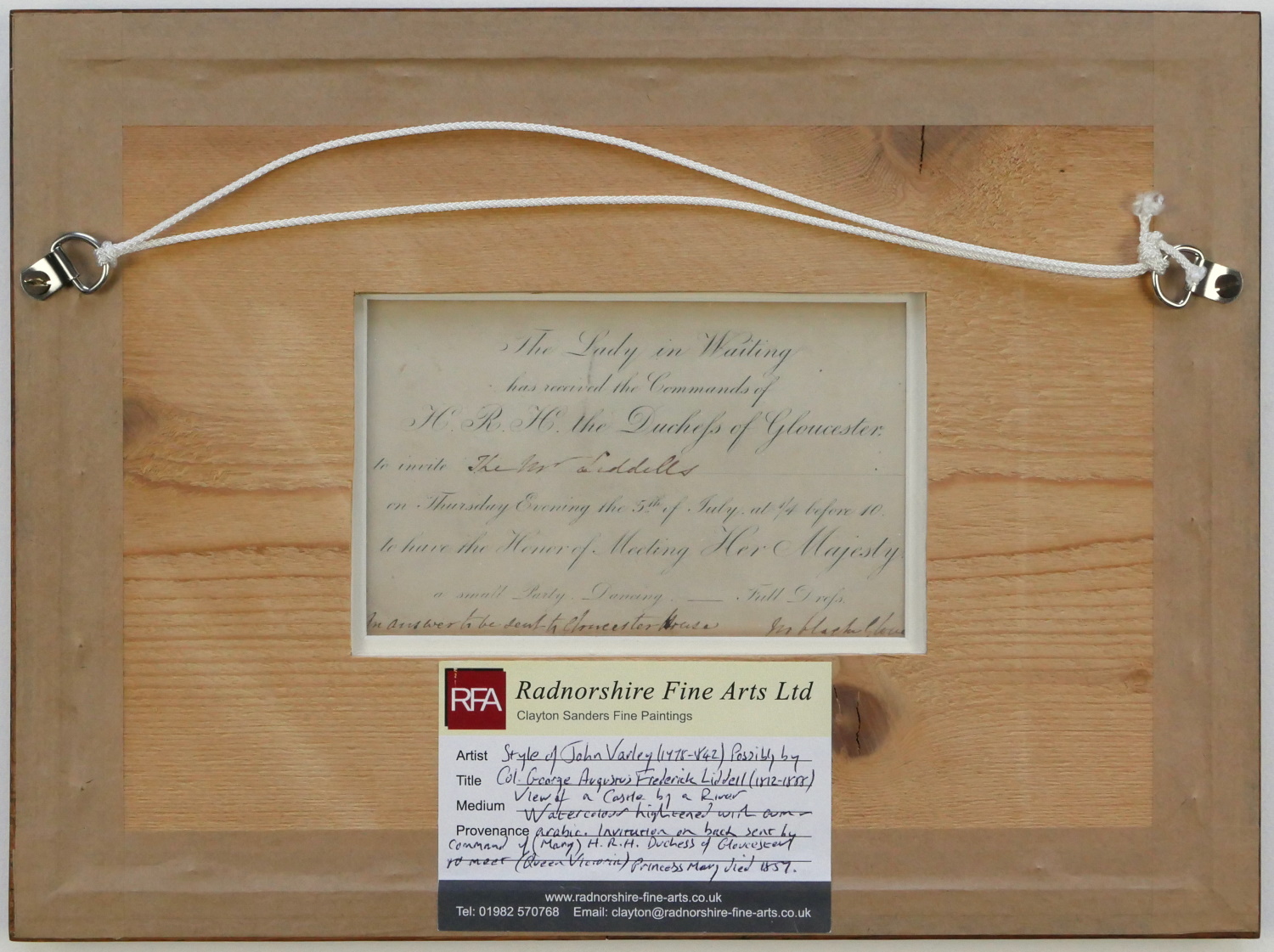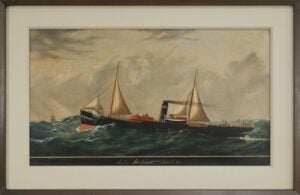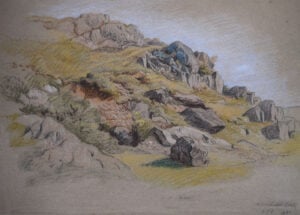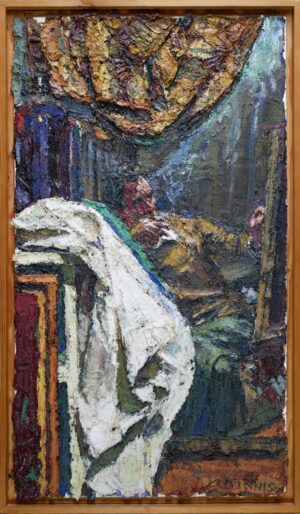Description
This watercolour in the style of John Varley (1778-1842) is painted on the back of an invitation card addressed to ‘The Mr Lidddells’. The recipient: Col. George Augustus Frederick Liddell, Deputy ranger of Windsor Park and a noted cricketer was also a keen watercolour artist. We have found very few of his watercolours to compare with but given that his name appears on the back of the watercolour it is possible the picture is by him. Photographs in the Royal collection show Liddell standing alongside members of the Royal Family including Queen Victoria.
The printed invitation was sent by command of (Mary) H. R. H. the Duchess of Gloucester to invite ‘The Mr Lidddells’ to meet Her Majesty (Queen Victoria) at a small party dance … Full Dress on Thursday evening the 5 of July at ¼ before 10. Inscribed by hand in brown ink: Answer to be sent to Gloucester House (home of the Duchess) In black Gloves.
Princess Mary married her first cousin Prince William Frederick, the Duke of Gloucester and Edinburgh on the 22 July 1816 whereupon Mary’s brother, The Prince Regent, raised the bridegroom’s style from Highness to Royal Highness, an attribute to which Mary’s rank as daughter of the King already entitled her. The couple lived at Bagshot Park, but after William’s death in 1834 she moved to White Lodge in Richmond Park. They had no children together.
Princess Mary died on 30 April 1857 at Gloucester House, London, aged 81. She was the last-surviving and longest-lived child of King George III and Queen Charlotte.
Brand
Varley, John (1778-1842)
John Varley was a watercolour painter and astrologer, and a close friend of William Blake. They collaborated in 1819–1820 on the book Visionary Heads, written by Varley and illustrated by Blake. He was the elder brother of Cornelius Varley.
Varley was born at the Old Blue Post Tavern, Hackney, on 17 August 1778. His father, Richard Varley, born at Epworth in Lincolnshire, had settled in London after the death of his first wife in Yorkshire. For a brief time John Varley was employed by a portrait painter in Holborn and then, at the age of 15 or 16, he became a pupil of Joseph Charles Barrow (fl. 1789–1802) who had an evening drawing school twice a week at 12 Furnival’s Inn Court, Holborn. It was Barrow who took Varley on a sketching tour to Peterborough from which he emerged as a professional painter.
In 1798 he exhibited a highly regarded sketch of Peterborough Cathedral at the Royal Academy and became a regular exhibitor at the RA until the foundation of the Old Watercolour Society in 1805. Varley was one of the founders of the OWS and exhibited over 700 drawings there. He also became a highly successful drawing master with pupils including Copley Fielding, David Cox, John Linnell and Turner of Oxford.
Despite his success, he was constantly in financial difficulties, “since he was both a hopeless businessman and by temperament something of a Micawber”. (Mallalieu). Varley was particularly skilled at the laying of flat washes of watercolour which suited the placid, contemplative mood that he often sought to evoke.
Varley published A Treatise on the Principles of Landscape Drawing, 1816–21 and A Practical Treatise on the Art of Drawing in Perspective. He also wrote an astrological text (with illustrations) entitled A Treatise on Zodiacal Physiognomy in 1828.
